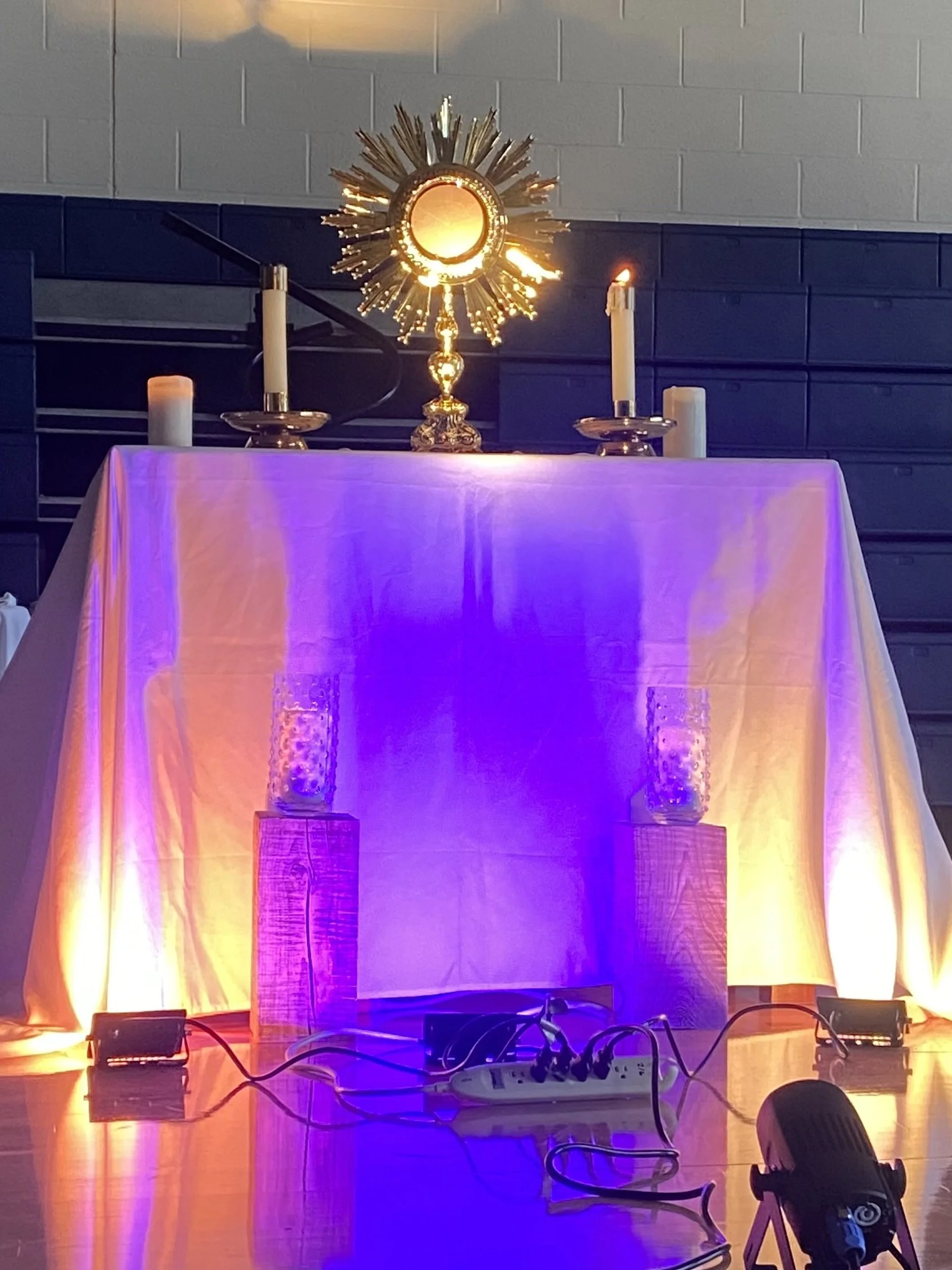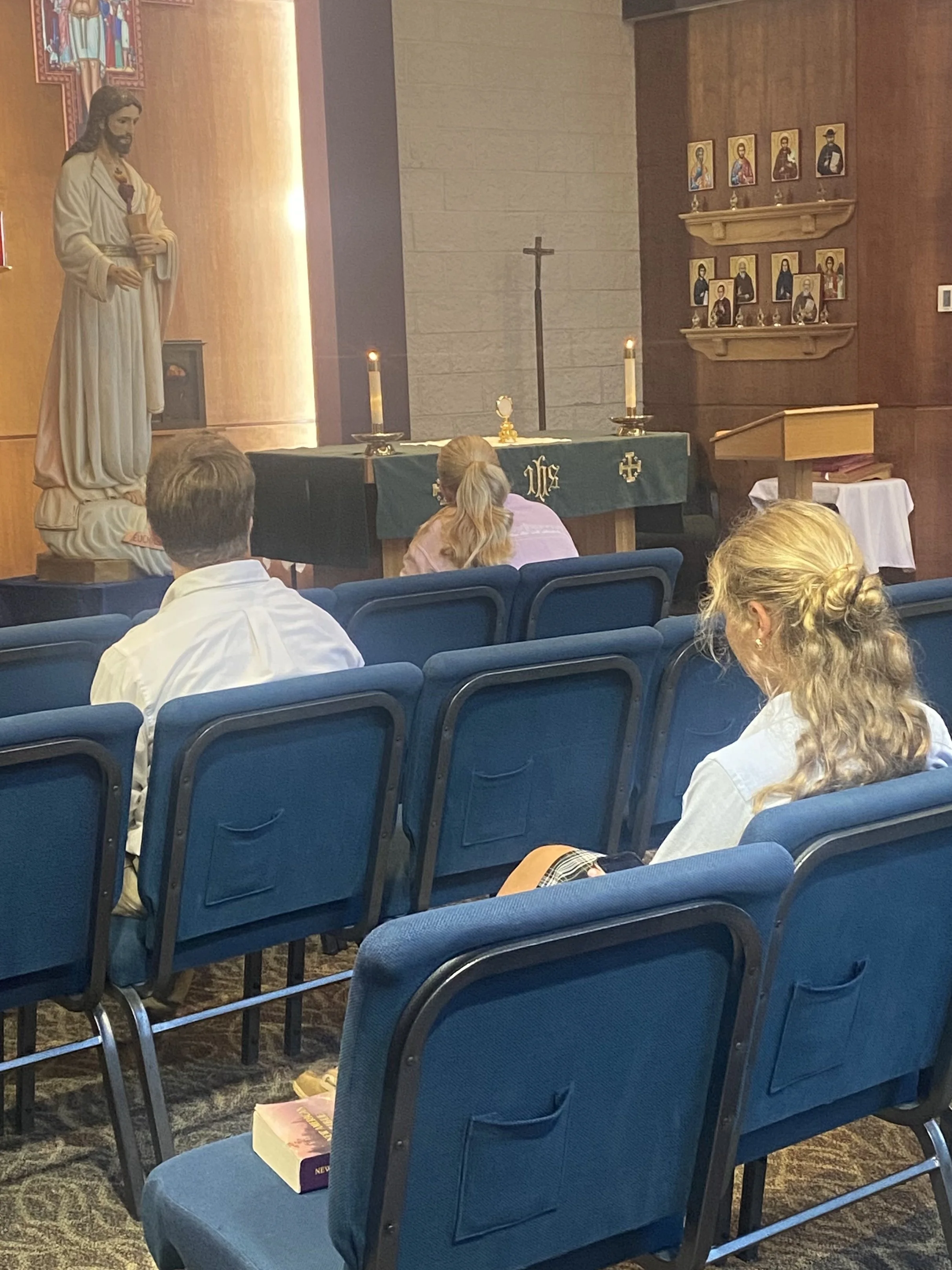O’ Come Let Us Adore Him!
The Eucharist is the “source and summit” of the Christian life (Lumen Gentium, 1964).
My First Encounter
I attended 13 years of Catholic school, yet I never once experienced Eucharistic Adoration. I didn’t even hear about it until I was an adult. After my first son was born, I started volunteering with my parish Life Teen program. My first assignment? Chaperone a Steubenville youth conference.
On the first night, the youth minister gave me a quick explanation of Adoration before we entered into prayer. I’ll never forget what happened next.
There were about 2,000 teenagers in the arena. The music pulsed with the rhythm of my heart. Around me, young people were laughing, crying, and praying in a way I had never seen before. For the first time, I realized I didn’t really know what it meant to have a relationship with Jesus. Watching those teens pray, I saw what was possible.
The next night, I opened my own heart during Adoration—and had a profound encounter with the Lord. It was a turning point in my faith and the start of a deeper relationship with Christ.
If you had told me in high school that Eucharistic Adoration could change lives, I wouldn’t have known what you meant. But years later, that first encounter at a Steubenville conference became the turning point in my faith. Now, I’ve seen how the same encounter with Jesus transforms our students.
What is Eucharistic Adoration?
The Church teaches that the Mass is the highest form of prayer, where we receive Jesus truly present in the Eucharist. The Catechism reminds us: “The Eucharist is the memorial of Christ’s Passover” (CCC 1362), and “Christ’s presence remains as long as the Eucharistic species subsist” (CCC 1377).
For centuries, Catholics have worshiped Christ present in the Eucharist outside of Mass through Adoration. St. John Paul II called this practice “of inestimable value for the life of the Church” (Ecclesia de Eucharistia, 25). Saint Teresa of Calcutta often urged believers, “If you want to do something good for the world, spend time with Jesus in the Eucharist first.”
Adoration is simply time spent with Jesus—loving Him, listening to Him, and letting Him love us. It’s where I have found peace, clarity, and confidence in prayer. Sometimes it’s powerful and transformative; other times it’s quiet and simple. But it is always real.
Offering Adoration at School
Amazing things happen in Eucharistic Adoration when teens open their hearts, drop their defenses, and allow Christ to move them, mold them, and transform them. I saw it at that first Steubenville conference, and I’ve witnessed it countless times since. Lives are changed in Eucharistic Adoration. For some, it’s the first time a young person realizes that Jesus loves them. That truth shapes why and how we bring Adoration to our students today.
Here are two formats that have worked at our school:
1. Schoolwide Adoration
Requires a schedule adjustment and intentional planning for seating.
Students sit or kneel on the floor—it works surprisingly well.
A large monstrance, candles, and simple spotlights help create a prayerful atmosphere.
Student musicians lead songs like O Saving Victim, Down in Adoration Falling, or other worship music that draws hearts to prayer.
2. “Holy Half Hour” Before School
Offered twice a week in our chapel from 7:30–8:00 a.m.
Open to all students; our senior campus ministry team is required to attend once a month.
The environment is simple: altar candles, soft music, and moments of silence. Short stretches of quiet can be powerful, even if silence doesn’t come easily for teens.
A Note on Canon Law
Canon Law (Canon 943) states that a priest or deacon is the ordinary minister to expose and repose the Blessed Sacrament, but in some cases—like at our school—extraordinary ministers of Holy Communion can be delegated by the bishop to expose and repose without Benediction. That’s how our team is able to lead Adoration when the priest isn’t present.
Tips for a Prayerful Environment:
Keep the space free from distractions.
Provide a worship aid or prayer guide for students.
Balance music and silence. Both can be powerful.
Be consistent. Regular opportunities help students grow comfortable with Adoration.
Resources to Share:
How can you make Eucharistic Adoration accessible to students? What small step could you take this semester to introduce it? I encourage every Campus Minister to give your teens the chance to sit at the feet of Jesus in the Eucharist. He will do the rest.






